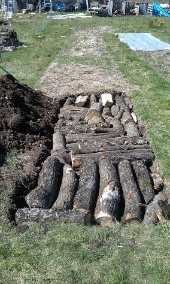









Lorinne Anderson: Specializing in sick, injured, orphaned and problem wildlife for over 20 years.
 2
2




Or maybe "if you use redwood for the bed and something easier to decompose in the center, the redwood won't be much touched while the center transforms."
Argue for your limitations and they are yours forever.




. . . bathes in wood chips . . .




Iterations are fine, we don't have to be perfect
My 2nd Location:Florida HardinessZone:10 AHS:10 GDD:8500 Rainfall:2in/mth winter, 8in/mth summer, Soil:Sand pH8 Flat





 3
3




![Filename: 20200620_194233.jpg
Description: [Thumbnail for 20200620_194233.jpg]](/t/141542/a/110546/20200620_194233.jpg)
For all your Montana Masonry Heater parts (also known as) Rocket Mass heater parts.
Visit me at
dragontechrmh.com Once you go brick you will never go back!




Sally Brown, a research assistant professor of soils at the University of Washington, knows her way around both food and metals. Starting out as a chef and then a food broker between farmers and restaurants, she became fascinated with soils and went on to earn a PhD in agronomy. Brown’s current research includes identifying the mechanisms by which organic residuals reduce the availability of soil metals to plants. She has some hard-earned opinions.
Brown says that if you already have the older, arsenic-treated wood in your garden, don’t panic. Plants will not take up arsenic unless the soils are deficient in phosphorus. That is not a problem for gardeners who use compost generously. As for the new copper-based wood treatments, Brown believes the actual risk is minimal. First of all, if plants take up too much copper, they will die before a gardener can eat them. In addition, if homegrown vegetables make up a small percentage of the diet, exposure to any metal taken up is insignificant. Do not use copper near ponds and streams because it is toxic to aquatic life.
Please give me your thoughts on my Affordable, double-paned earthbag window concept


















| I agree. Here's the link: http://stoves2.com |





